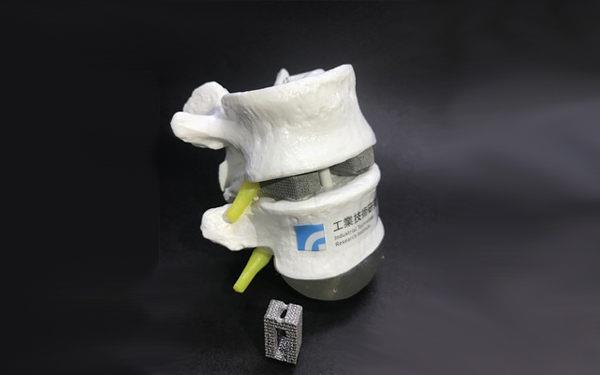As the self-made manufacturing capitol of the world, China is a country to look to for 3D printing’s ascension into the supply chain. Though a recent report stated “It is still too early to conclude that the mass production era has been replaced by the mass customisation era,” the State has made formal efforts to increase the adoption additive manufacturing in industry.
One area that will have to act quickly to stay ahead of this curve is healthcare. Now the China Food and Drug Administration (CFDA) is calling for professional input to prepare a thorough guidance for the appropriate registration of customized, 3D printed medical devices.

CFDA 3D printed medical guidance notes
With appropriate guidance in place, the CFDA hopes to encourage the development of new, innovative, custom-made medical devices, that tailor to specific needs.
In order to achieve registration, manufactures will have to obtain verification for all parts of the process. According to the current draft guidance, “The process of production and verification of custom-built additive-produced medical devices should, in particular, control the testing of printing equipment, processes, post-processing, raw materials and final products, as well as cleaning, packaging and sterilization.”
In total, applications will require six fields on information:
- Product name – “according to the design characteristics and scope of application of the declared product to determine its management category, classification coding and standardized naming.”
- Product description – including the chemical composition of each component in the product.
- Clinically relevant model specifications – e.g. feature dimensions, tolerance.
- Scope of application and contraindications.
- R&D background with comparison to similar products.
- Research data on product performance – with supplementary material characterization.

It’s time to get involved
In the U.S., the FDA issued its guidance on the “Technical Considerations for
Additive Manufactured Medical Devices” in December 2017. Following this, 3D Printing Industry sought comment from professionals in the medical sector. The resulting article, featuring opinion from Laura Gilmour, global medical business development manager at EOS, Kim Torluemke, VP of Quality and Regulatory at 3D Systems Healthcare, and more can be read here.
Australia’s Therapeutic Goods Administration (TGA) also opened consultation on the topic in November 2017.
Before issuing its full guidance on the additive manufacturing of medical devices, the CFDA is publicly soliciting opinions on its website. Contributions will remain open until March 30, 2018.
For all the latest medical updates subscribe to 3D Printing Industry newsletter, follow us on Twitter, and like us on Facebook.
Searching for your way into the industry? Or new talent to join your growing team. Sign up to 3D Printing Industry Jobs.
Vote for healthcare application of the year and more in 2018 3D Printing Industry Awards is now open. Protolabs is sponsoring the 2018 3D Printing Industry Awards design competition. Submit your entries now for the chance to win a 3D printer.
Featured image shows surgeons in Xijing Hospital operating theater, implanting a 4D printed breast. Screenshot via New China TV on YouTube



